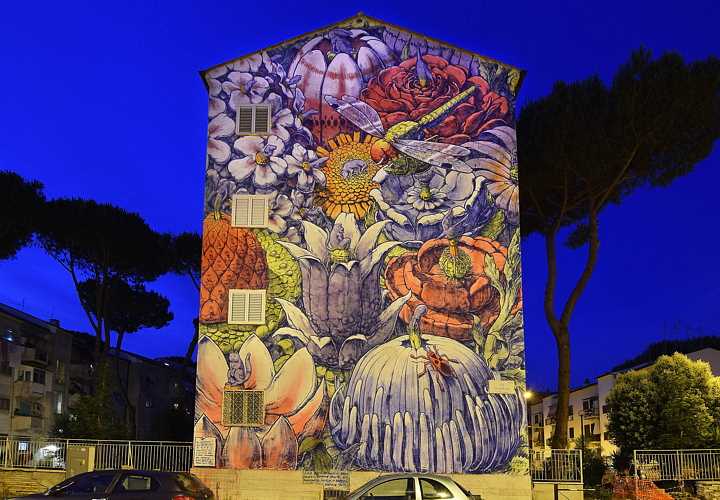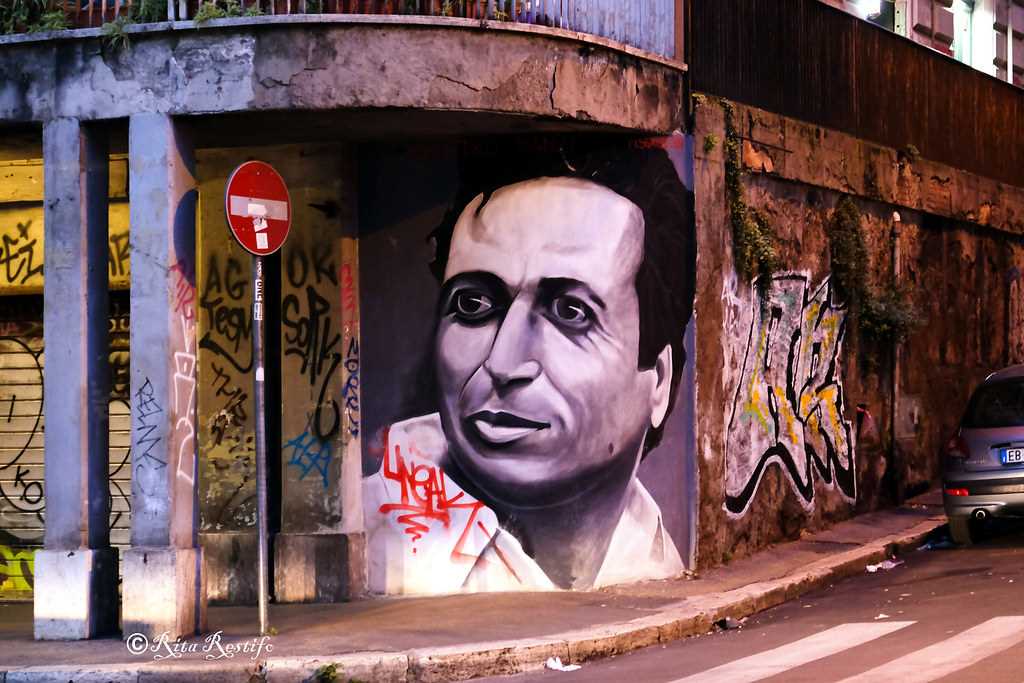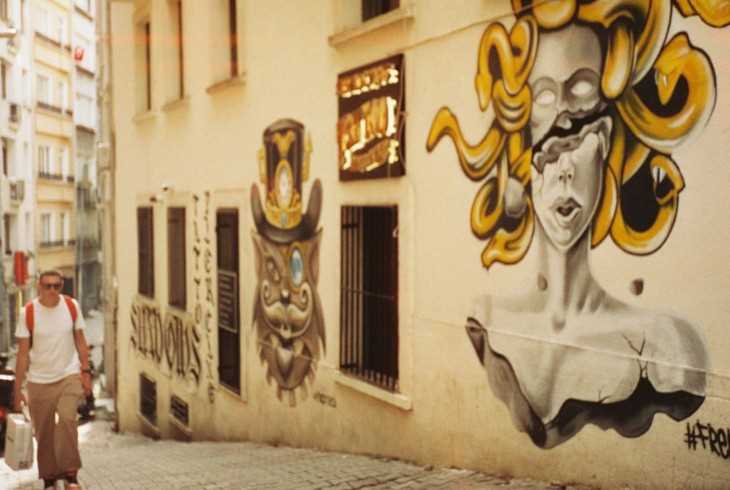
One of the most fascinating aspects of street art in Roma is how it reflects the city’s rich history and culture. Artists often incorporate elements of Roman mythology, ancient architecture, and iconic figures into their pieces. This fusion of the old and the new creates a unique visual tapestry that pays homage to the city’s past while also pushing boundaries and challenging traditional ideas.
But street art in Roma is not just about aesthetics. It serves as a powerful form of social commentary and a means of giving voice to marginalized communities. Artists use their work to address issues such as inequality, gentrification, and environmental concerns. The streets become a platform for dialogue and a call to action, inviting passersby to engage with the art and reflect on the society they live in.
With its bustling streets and diverse neighborhoods, Roma provides the perfect backdrop for street art to thrive. The city’s vibrant energy and creative spirit attract artists from all over the world, who collaborate with local talents to create engaging and thought-provoking pieces. The streets of Roma have become a gallery without borders, where art is accessible to everyone, regardless of their social or economic background.

Street art has a long and vibrant history in Roma, dating back to ancient times. The city has been a hub of artistic expression for centuries, with graffiti and other forms of street art playing a prominent role in its culture.
Ancient Graffiti

Even during the time of the Roman Empire, graffiti was prevalent on the streets of Roma. Much of this graffiti was political or social in nature, serving as a form of protest or commentary on the state of the city. Some of these ancient graffiti can still be seen today, providing a unique glimpse into the thoughts and ideas of ancient Romans.
Modern Street Art Movement

In recent years, Roma has seen a resurgence of street art, with local and international artists using the city as their canvas. The modern street art movement in Roma has its roots in the 1990s, when artists began to use abandoned buildings and walls as a means of self-expression.
Today, street art can be found throughout the city, with vibrant murals and graffiti adorning the walls of neighborhoods like Trastevere and Ostiense. The local government has even embraced street art, creating designated areas where artists can freely create and showcase their work.
The street art in Roma reflects the diverse cultural and social fabric of the city. Artists use their work to tackle important issues such as immigration, urbanization, and environmentalism, creating a thought-provoking and visually stunning tapestry of artistic expression.
| Year | Event |
|---|---|
| 1990s | The modern street art movement begins in Roma. |
| 2000s | Street art becomes more prominent, with international artists contributing to the scene. |
| 2010s | Roma embraces street art, creating designated areas for artists to showcase their work. |
Murals and Street Art in the City
When exploring the streets of Rome, it is impossible to ignore the vibrant and colorful murals that adorn the city. These murals, often referred to as street art, have become a prominent part of Rome’s urban culture and serve as a form of artistic expression.
The murals in the city cover a wide range of subjects, from political and social issues to abstract and surrealistic artworks. They can be found on the sides of buildings, on walls in narrow alleyways, and even on the doors of shops and restaurants.
What makes the street art in Rome unique is the combination of bold colors, intricate details, and the messages they convey. Each mural tells a story or makes a statement, offering a glimpse into the artists’ perspectives and the issues that matter to them.
One of the most famous street art neighborhoods in Rome is the Pigneto area. Here, you can find an impressive collection of murals that showcase the creativity and talent of local artists. From large-scale murals that cover entire buildings to smaller, hidden gems tucked away in corners, there is something to discover around every corner.
Street art in Rome is not limited to traditional murals. Artists also use other forms of expression, such as stencil art, wheatpasting, and graffiti, to leave their mark on the city streets. This diverse range of techniques adds to the dynamic and ever-changing landscape of street art in Rome.
While some may view street art as vandalism, it is important to recognize the role it plays in shaping the identity of a city. Murals and street art in Rome add color, vibrancy, and a sense of creativity to the urban environment. They provide a canvas for artists to share their voice and provoke thought and discussion among residents and visitors alike.
Next time you find yourself wandering the streets of Rome, take a moment to appreciate the murals and street art that surround you. They are not just decorative pieces; they are a reflection of the city’s cultural heritage and the creative spirit of its people.
Street Art as a Reflection of the Roma Culture

Street art in Roma goes beyond just being an artistic form of expression; it serves as a powerful reflection of the Roma culture and its unique identity. By examining the vibrant murals and graffiti scattered throughout the city, one can gain valuable insights into the history, struggles, and triumphs of the Roma people.
The Roma Identity

Through colorful murals depicting Roma heroes, iconic symbols, and scenes from traditional Roma life, street artists in Roma celebrate the unique culture and history of their community. These artworks challenge stereotypes and highlight the resilience, strength, and beauty of the Roma people.
Preserving History and Traditions

Furthermore, street art in Roma often incorporates traditional Romani symbols and motifs, such as the wheel and the peacock feathers, which hold deep cultural significance. These symbols serve as a visual reminder of the Roma traditions and contribute to the preservation of the community’s cultural heritage.
The Impact of Street Art on the Urban Environment

Street art is a powerful form of expression that has a significant impact on the urban environment. It brings life, creativity, and vibrancy to often dull and mundane cityscapes. Street art is an art movement that allows artists to share their opinions, thoughts, and emotions with the public, turning the urban environment into a canvas for their creations.
Artistic Revitalization

One of the major impacts of street art on the urban environment is the revitalization of neglected or forgotten spaces. Abandoned buildings, vacant lots, and unremarkable walls are transformed into vibrant and captivating works of art. The presence of street art in these spaces not only beautifies the surroundings but also attracts attention and brings communities together. It creates a sense of pride, ownership, and identity among the residents of the area.
Street art allows artists to reclaim and reimagine public spaces, transforming them into places that are more inviting and engaging for the community. By injecting color, creativity, and individuality into the urban environment, street art challenges the conventional notions of what art is and where it belongs. It breaks the barriers between the gallery and the public, taking art out of its traditional elite settings and making it accessible to everyone.
Social Commentary
Street art also serves as a tool for social commentary. Artists often use their work to raise awareness about social, political, and environmental issues. Through their art, they can address topics such as inequality, discrimination, climate change, and urban gentrification. Street art creates an open dialogue between artists and the public, prompting discussions and encouraging critical thinking.
Street artists have the power to challenge the status quo and offer alternative perspectives on the issues that shape our urban environment. Their works can ignite conversations and inspire change, leading to a more inclusive and responsive society.

I am a mural enthusiast and a fervent admirer of street art. Rather than creating murals myself, I am passionate about collecting them. My love for street art knows no bounds. I am dedicated to curating and cherishing these artworks that grace the streets. My collection stands as a testament to my profound appreciation for this form of artistic expression.
read about me



